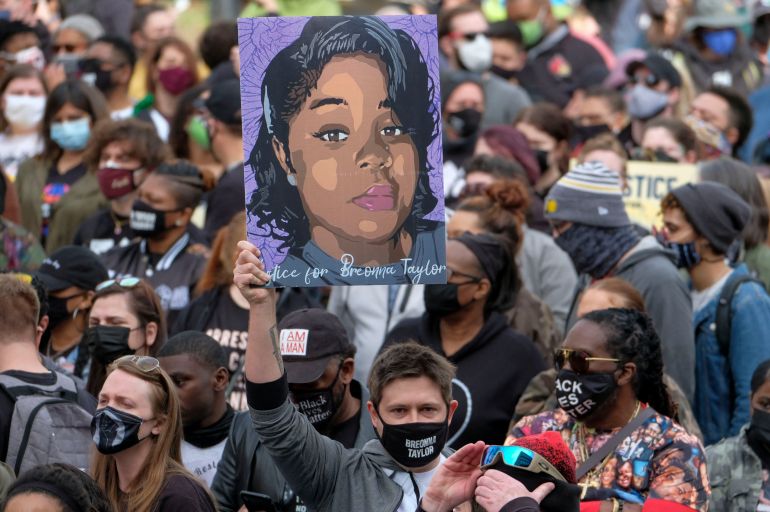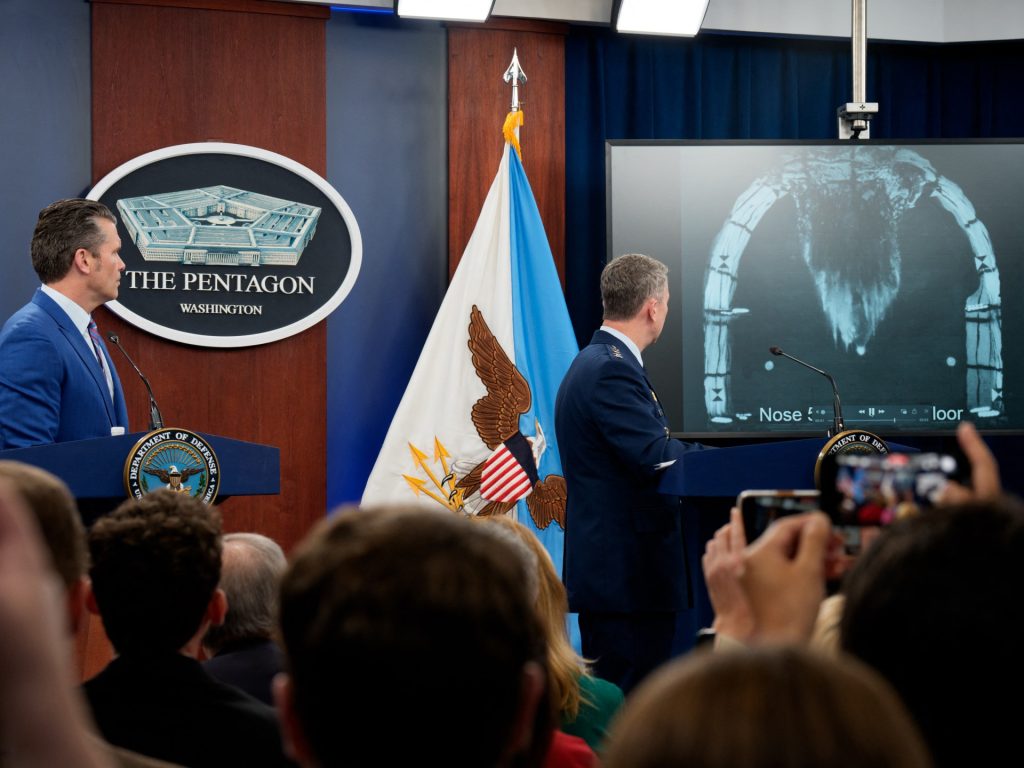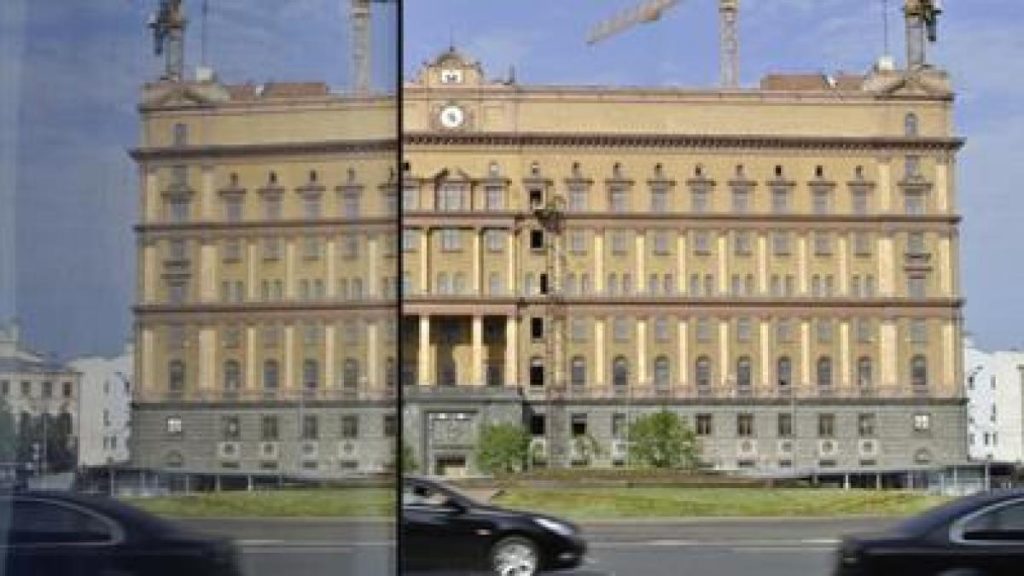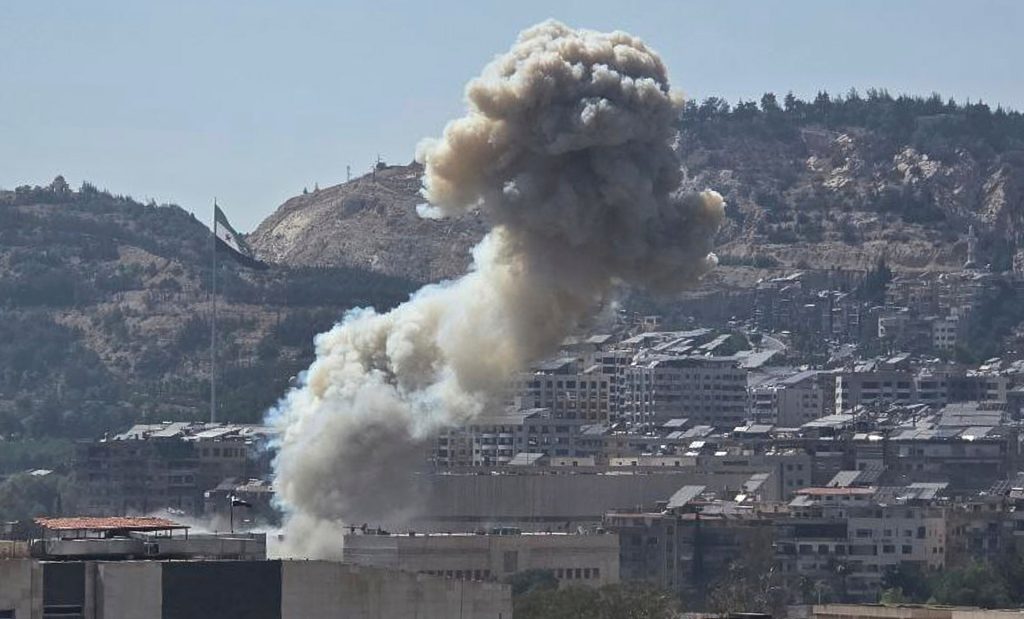Felix Baumgartner death: Witnesses heard loud boom before crash

Felix Baumgartner’s fatal paragliding crash was preceded by large boom as it spun to the ground, according to witnesses. Beachgoers knew something was wrong when they heard a loud boom ring out as a paraglider spun out of control, before killing its only occupant, extreme athlete Felix Baumgartner, when it crashed next to a swimming pool near the Adriatic Sea. A 30-year-old mother watched the deadly descent unfold Thursday afternoon from nearby with her two young children, who were entranced by the constant traffic of paragliders above the beach town of Porto Sant’Elipido in central Italy’s Marche region. “Everything was normal, then it started to spin like a top,’’ Mirella Ivanov said on Friday. “It went down and we heard a roar. In fact, I turned around because I thought it crashed on the rocks. Then I saw two lifeguards running, people who were running toward” the crash site. When she saw people trying to revive the occupant, she hustled her two children away. The city’s mayor confirmed the death of 56-year-old Baumgartner, who was renowned as the first skydiver to fall faster than the speed of sound. The cause of the paragliding accident was under investigation. Police did not return calls asking for comment. “It is a destiny that is very hard to comprehend for a man who has broken all kinds of records, who has been an icon of flight, and who travelled through space,” Mayor Massimiliano Ciarpella told The Associated Press. Ciarpella said that Baumgartner had been in the area on vacation, and that investigators believed he may have fallen ill during the fatal flight. Baumgartner’s social media feed features videos of him in recent days flying on a motorised paraglider – known as paramotoring – above seaside towns, and taking off from a nearby airfield surrounded by cornfields. Workers stand near the swimming pool of the ‘Le Mimose’ resort, where skydiver Felix Baumgartner’s paraglider crashed, killing him and injuring a hotel employee on the ground, in Porto Sant’Elpidio, Italy [Guglielmo Mangiapane/Reuters] The Clube de Sole Le Mimose beachside resort where the crash occurred said in a statement that an employee who was “slightly injured” in the accident was in good condition. No guests were injured, and the pool has been reopened. Advertisement In 2012, Baumgartner, known as “Fearless Felix,” became the first human to break the sound barrier with only his body. He wore a pressurised suit and jumped from a capsule hoisted more than 24 miles (39 kilometres) above Earth by a giant helium balloon over New Mexico. The Austrian, who was part of the Red Bull Stratos team, topped out at 843.6 mph (1,357.6km/h) – the equivalent of 1.25 times the speed of sound – during a nine-minute descent. At one point, he went into a potentially dangerous flat spin while still supersonic, spinning for 13 seconds, his crew later said. In 2012, millions watched YouTube’s livestream as Baumgartner coolly flashed a thumbs-up when he came out of the capsule high above Earth and then activated his parachute as he neared the ground, lifting his arms in victory after he landed. Baumgartner’s altitude record stood for two years until Google executive Alan Eustace set new marks for the highest free-fall jump and greatest free-fall distance. Baumgartner, a former Austrian military parachutist, made thousands of jumps from planes, bridges, skyscrapers and famed landmarks, including the Christ the Redeemer statue in Brazil. In 2003, he flew across the English Channel in a carbon fibre wing after being dropped from a plane. In recent years, he performed with The Flying Bulls, an aviation team owned and operated by Red Bull, as a helicopter stunt pilot in shows across Europe. Red Bull paid Baumgartner tribute in a post Friday, calling him “precise, demanding and critical. With others, but above all toward yourself.” The statement underlined the research and courage with which Baumgartner confronted “the greatest challenges.” “No detail was too small, no risk too great, because you were capable of calculating it,’’ Red Bull said. Adblock test (Why?)
Why do US prosecutors want a one-day sentence for Breonna Taylor shooting?

The United States Department of Justice (DOJ) is seeking a shortened prison sentence of just one day for an ex-police officer convicted of using excessive force during a raid in Louisville, Kentucky that led to the death of Breonna Taylor, an African-American medical worker, in March 2020. Brett Hankison was convicted in November last year of blindly firing several shots during a failed drug raid, which resulted in Taylor’s death. Although his shots were not the ones which hit Taylor, prosecutors argued his actions were a violation of Taylor’s rights and others present at the scene. After it spent several years pursuing a conviction under the previous administration, the DOJ’s recommendation on Thursday represents a 180-degree turn, which has caused anger in the Black community. Hankison’s sentencing will take place on Monday, when a federal judge will decide his term at a hearing. Here’s what we know about the case: A protester brandishes a portrait of Breonna Taylor during a rally in remembrance on the first anniversary of her death in Louisville, Kentucky, on March 13, 2021 [Jeff Dean/AFP] What happened to Breonna Taylor? Taylor, an emergency medical technician, was shot dead during a raid by police from the Louisville Metro Police Department in her apartment in the early hours of March 13, 2020. Seven plain-clothed officers executed a “no-knock” search warrant. Three officers broke down the door to her two-bedroom apartment, where Taylor was in bed with her boyfriend, Kenneth Walker. Walker, who possessed a licensed firearm, fired one shot. He later told police he thought the men were intruders. One officer, Jonathan Mattingly, was struck and wounded in the thigh. Mattingly and his colleague, Miles Cosgrove, directly returned fire into the apartment. Cosgrove delivered the fatal shot that killed Taylor. She was shot six times and died in the hallway. Advertisement Hankison ran to the side of the building and fired 10 shots into the apartment through a window and sliding door covered with blinds. Some of the bullets hit an occupied apartment adjacent to Taylor’s. A report by the Federal Bureau of Investigation (FBI) determined that the police fired 32 shots in total. Jamarcus Glover, Taylor’s ex-boyfriend, had been the original target of the search, as authorities believed he hid narcotics at Taylor’s apartment. He was arrested at a separate location in Louisville that night, before Taylor’s killing. It is unclear if the same team of officers arrested Glover. Taylor’s murder, and an initial absence of charges against the police officers involved, triggered mass, months-long protests across the country. No officers faced direct charges over Taylor’s death. Only Hankison faced charges for firing blindly. Taylor’s case and the killing of George Floyd in May 2020, fuelled a national reckoning on racism and police brutality as part of the Black Lives Matter movement. Taylor’s family received a $12m settlement from the city of Louisville in September 2020. The city also banned no-knock raids with the introduction of the “Breonna Law”. Former Louisville police officer Brett Hankison is questioned by his defence lawyer, March 2, 2022, in Louisville [Timothy D Easley/AP Photo] Why are prosecutors recommending a one-day sentence? Prosecutors under the Trump administration are recommending that Hankison serve no further jail term for the case, and that he should instead be sentenced to time already served plus three years of supervised probation. Hankison served one day in jail after he was arrested in 2023 for his first court appearance. At the time, federal prosecutors under the Biden administration sought a conviction against him that could have amounted to a maximum life sentence. In November 2024, a federal jury found Hankison guilty of using excessive force and depriving Taylor of her civil rights. However, in a memo on Thursday, the DOJ said there “is no need for a prison sentence to protect the public” from Hankison. The memo added that although Hankison’s response in the “fraught circumstances was unreasonable” in hindsight, “that unreasonable response did not kill or wound Breonna Taylor, her boyfriend, her neighbours, defendant’s fellow officers, or anyone else”. What happened to the other officers? Hankison is the only one of the three officers at the scene to face charges. He was fired from the police force in June 2020, and Cosgrove was fired in 2021, after local investigations determined they had violated standard practice by shooting blindly. Mattingly retired in April 2021. Advertisement Another ex-officer who was not at the scene pleaded guilty to federal charges of violating Taylor’s civil rights by falsely stating on the search warrant that Taylor received packages for Glover. Two other former officers pleaded not guilty to similar charges. If the court heeds the DOJ’s advice, none of the officers involved in the case would have faced jail time. It is not certain that the court will agree to the recommendation. How have Taylor’s family responded? Ben Crump, the civil rights lawyer who helped Taylor’s family secure the $12m settlement against Louisville, said in a statement on the social media site X that the DOJ’s recommendation was an “insult to the life of Breonna Taylor and a blatant betrayal of the jury’s decision”. “This sets a dangerous precedent,” Crump wrote on Thursday. “When a police officer is found guilty of violating someone’s constitutional rights, there must be real accountability and justice. Recommending just one day in prison sends the unmistakable message that white officers can violate the civil rights of Black Americans with near-total impunity.” What was the verdict in Hankison’s trial? The DOJ, under a different leadership, charged Hankison in 2022 on one count of violating the civil rights of Taylor and her boyfriend, Walker, as well as Taylor’s neighbours, when he blindly fired into her home. The state of Kentucky arraigned Hankison on similar charges but cleared him of wrongdoing in March 2022. However, after four days of deliberation, a federal jury declared a mistrial in November 2023, as jurors were unable to reach a joint decision. Witnesses gave conflicting testimonies, including about whether the police officers had
Man Utd close on Mbeumo deal with medical imminent

Manchester United are on the verge of signing Bryan Mbeumo from Brentford with a medical understood to be imminent. Manchester United have reportedly agreed to sign Cameroon winger Bryan Mbeumo from Brentford in a deal worth an initial $87m as Ruben Amorim steps up his overhaul of the team’s misfiring attack. Mbeumo attracted Amorim’s attention with 20 goals in 38 Premier League games for Brentford last season. Tottenham, now managed by former Brentford boss Thomas Frank, were also chasing the 25-year-old before United’s improved offer sealed the deal after their two previous bids were rebuffed. United will pay an additional 6 million pounds ($8.07m) in potential add-ons to Brentford. Mbeumo is due to undergo a medical in time to travel to the United States on Tuesday as Amorim’s men start their pre-season tour. He is set to become United’s third signing since the end of last season, joining Wolves forward Matheus Cunha and teenage Paraguayan defender Diego Leon at Old Trafford. Amorim has been determined to revamp United’s forward options after a woeful campaign. They suffered a toothless 1-0 defeat against Tottenham in the Europa League final and a 15th-place finish in the top flight that ranked as their lowest since 1973-74. Rasmus Hojlund and Joshua Zirkzee struggled as Amorim’s main strikers last term. Amorim has reportedly told Alejandro Garnacho to look for a new club, while Marcus Rashford and Jadon Sancho are expected to leave following their loan spells at Aston Villa and Chelsea, respectively. Mbeumo will be Amorim’s latest new recruit in his bid to revitalise moribund United. Having already paid 62.5 million pounds ($84.03m) for Cunha, United’s spending spree comes despite their failure to qualify for the Champions League costing the club a minimum of 70 million pounds ($94.11m). Advertisement The versatile Mbeumo is able to operate in a variety of roles on the flanks or in central attacking areas. His pace, creativity and clinical finishing should be a significant boost to United. Mbeumo blossomed in six years at Brentford, scoring 70 goals and providing 51 assists in 242 appearances in all competitions following his move from French club Troyes in 2019. He helped the Bees win promotion to the Premier League in 2021 and was instrumental in their impressive 10th-place finish in 2024-25. Adblock test (Why?)
New reports cast doubt on impact of US strikes on Iran’s nuclear sites

Washington, DC – New media reports in the United States, citing intelligence assessments, have cast doubt over President Donald Trump’s assertion that Washington’s military strikes last month “obliterated” Iran’s nuclear programme. The Washington Post and NBC News reported that US officials were saying that only one of the three Iranian nuclear sites – the Fordow facility – targeted by the US has been destroyed. The Post’s report, released on Friday, also raised questions on whether the centrifuges used to enrich uranium at the deepest level of Fordow were destroyed or moved before the attack. “We definitely can’t say it was obliterated,” an unidentified official told the newspaper, referring to Iran’s nuclear programme. Trump has insisted that the US strikes were a “spectacular” success, lashing out at any reports questioning the level of damage they inflicted on Iran’s nuclear programme. An initial US intelligence assessment, leaked to several media outlets after the attack last month, said the strikes failed to destroy key components of Iran’s nuclear programme and only delayed its work by months. But the Pentagon said earlier in July that the attacks degraded the Iranian programme by one to two years. While the strikes on Fordow – initially thought to be the most guarded facility, buried inside a mountain – initially took centre stage, the NBC News and Washington Post reports suggested that the facilities in Natanz and Isfahan also had deep tunnels. ‘Impenetrable’ The US military did not use enormous bunker-busting bombs against the Isfahan site and targeted surface infrastructure instead. Advertisement A congressional aide familiar with intelligence briefings told the Post that the Pentagon had assessed that the underground facilities at Isfahan were “pretty much impenetrable”. The Pentagon responded to both reports by reiterating that all three sites were “completely and totally obliterated”. Israel, which started the war by attacking Iran without direct provocation last month, has backed the US administration’s assessment, while threatening further strikes against Tehran if it resumes its nuclear programme. For its part, Tehran has not provided details about the state of its nuclear sites. Some Iranian officials have said that the facilities sustained significant damage from US and Israeli attacks. But Supreme Leader Ali Khamenei said after the war that Trump had “exaggerated” the impact of the strikes. The location and state of Iran’s highly enriched uranium also remain unknown. Iran’s nuclear agency and regulators in neighbouring states have said they did not detect a spike in radioactivity after the bombings, suggesting the strikes did not result in uranium contamination. But Rafael Grossi, the head of the United Nations nuclear watchdog, the IAEA, did not rule out that the uranium containers may have been damaged in the attacks. “We don’t know where this material could be or if part of it could have been under the attack during those 12 days,” Grossi told CBS News last month. According to Grossi, Iran could resume uranium enrichment in a “matter of months”. The war Israel launched a massive attack against Iran on June 13, killing several top military officials, as well as nuclear scientists. The bombing campaign targeted military sites, civilian infrastructure and residential buildings across the country, killing hundreds of civilians. Iran responded with barrages of missiles against Israel that left widespread destruction and claimed the lives of at least 29 people. The US joined the Israeli campaign on June 22, striking the three nuclear sites. Iran retaliated with a missile attack against an air base housing US troops in Qatar. Initially, Trump said the Iranian attack was thwarted, but after satellite images showed damage at the base, the Pentagon acknowledged that one of the missiles was not intercepted. “One Iranian ballistic missile impacted Al Udeid Air Base June 23 while the remainder of the missiles were intercepted by US and Qatari air defence systems,” Pentagon spokesperson Sean Parnell told Al Jazeera in an email last week. Advertisement “The impact did minimal damage to equipment and structures on the base. There were no injuries.” After a ceasefire was reached to end the 12-day war, both the US and Iran expressed willingness to engage in diplomacy to resolve the nuclear file. But talks have not materialised. Iran and the US were periodically holding nuclear talks before Israel launched its war in June. EU-Iran talks During his first term in 2018, Trump withdrew the US from the 2015 multilateral nuclear agreement, known as the Joint Comprehensive Plan of Action (JCPOA). The agreement saw Iran scale back its nuclear programme in exchange for lifting international sanctions against its economy. In recent days, European officials have suggested that they could impose “snap-back” sanctions against Iran as part of the deal that has long been violated by the US. Tehran, which started enriching uranium beyond the limits set by the JCPOA after the US withdrawal, insists that Washington was the party that nixed the agreement, stressing that the deal acknowledges Iran’s enrichment rights. I had a joint teleconference with E3 FMs & EU HR last night, in which I made the following points clear: It was the US that withdrew from a two-year negotiated deal -coordinated by EU in 2015- not Iran; and it was US that left the negotiation table in June this year and chose a… pic.twitter.com/NFQdK2HZD4 — Seyed Abbas Araghchi (@araghchi) July 18, 2025 On Friday, Iranian Foreign Minister Abbas Araghchi said he held talks with the top diplomats of France, the United Kingdom and Germany – known as the E3 – as well as the European Union’s high representative. Araghchi said Europeans should put aside “worn-out policies of threat and pressure”. “It was the US that withdrew from a two-year negotiated deal – coordinated by EU in 2015 – not Iran; and it was US that left the negotiation table in June this year and chose a military option instead, not Iran,” the Iranian foreign minister said in a social media post. “Any new round of talks is only possible when the other side is ready for a fair, balanced, and mutually beneficial nuclear deal.”
How Israeli-backed gangs in Gaza are extorting starving civilians
[unable to retrieve full-text content] Israeli-backed criminal gangs in Gaza are looting aid trucks carrying food meant for hungry civilians.
UK sanctions senior Russian intelligence officers over cyberattacks

The UK sanctions three units of the Russian military intelligence GRU agency and 18 of its officers. The United Kingdom says it has sanctioned more than 20 Russian spies, hackers and agencies over what it called a “sustained campaign of malicious cyber activity” to destabilise Europe. The Foreign Office said on Friday it was sanctioning three units of the Russian military intelligence GRU agency and 18 of its officers. Those sanctioned include officers it said were involved in preparing the attack against Ukraine’s Mariupol theatre in the first month of the war in 2022, which killed hundreds of civilians of taking shelter inside the building. It also sanctioned those it accuses of involvement in targeting former Russian spy Sergei Skripal and his daughter Yulia, who were the victims of a nerve agent Novichok poisoning attack in 2018 in the UK. “GRU spies are running a campaign to destabilise Europe, undermine Ukraine’s sovereignty and threaten the safety of British citizens,” Foreign Secretary David Lammy said in a statement. The UK also said Russia had targeted media outlets, telecoms providers, political and democratic institutions, and energy infrastructure in the UK. British authorities have repeatedly accused Moscow of orchestrating malign activity, ranging from traditional espionage and actions to undermine democracy, to sabotage and assassinations. Russia denies claims Earlier this month, three men were convicted over an arson attack on a Ukrainian-linked business in London that police said was carried out at the behest of the Wagner mercenary group. Moscow has rejected such accusations, saying they were politically motivated and that it posed no threat to the UK. Advertisement In addition to the sanctions aimed at GRU, the British foreign ministry said it was sanctioning three leaders of the “African Initiative,” which it said was a Russian-funded social media content mill conducting information operations in West Africa. The UK has recently ramped up its military spending to help change its approach to defence, partly to address threats from Russia, nuclear risks and cyberattacks. The European Union and NATO also issued statements on Friday condemning what they described as Russia’s destabilising hybrid activities. The UK move came on the same day the EU approved a new host of stiff sanctions against Russia over its war in Ukraine. The EU sanctions package includes a lower oil price cap, a ban on transactions with Nord Stream gas pipelines, and the targeting of more shadow fleet ships. Adblock test (Why?)
‘Israel is calling the shots in many ways’ says Al Jazeera reporter

NewsFeed As fighting continues between factions in southern Syria and the country’s army faces threats from Israel if it intervenes, Al Jazeera’s Zeina Khodr says Israel’s posture poses a major challenge to the Syrian government. Published On 18 Jul 202518 Jul 2025 Adblock test (Why?)
Felix Baumgartner, extreme athlete, dies in paragliding crash in Italy

The legendary daredevil, best known for his record-breaking jump from the stratosphere, lost control of his paraglider and crashed into a hotel pool. Renowned extreme athlete Felix Baumgartner, most famous for jumping from a record 39 kilometres (24 miles) at the edge of space in the 2012 Red Bull Stratos project, has died in a paragliding accident in Italy on Thursday. The 56-year-old Austrian crashed his paraglider in Porto Sant’Elpidio, situated on the Italian Adriatic coast, after losing control and plunged into a wooden structure next to a swimming pool of the Le Mimose Family Camping Village, according to Italian media reports. A female hotel employee was injured by a piece of debris and taken to hospital with neck injuries. Baumgartner died at the scene of the accident, and investigations into the circumstances of the accident are under way. Italian media reported that Baumgartner had already lost consciousness in the air. The city’s mayor, Massimiliano Ciarpella, confirmed Baumgartner’s death in a social media post. “Our community is deeply affected by the tragic disappearance of Felix Baumgartner, a figure of global prominence, a symbol of courage and passion for extreme flight,” the mayor said. Just two hours before his deadly crash, he posted on the social media platform Instagram with the foreboding caption “too much wind”. The famous 2012 jump from the edge of space that propelled Felix Baumgartner to global fame [Handout/Red Bull Content/Pool via Reuters] From skydiving to the stratosphere Born in Salzburg, Baumgartner completed his first parachute jump at the age of 16 and later became a parachutist in the Austrian military. Advertisement Baumgartner’s reputation as an extreme sports athlete grew exponentially when he turned his hand to the sport of base jumping in the 1990s. He set a new world record for the highest base jump from a building with his leap from the Petronas Towers in Kuala Lumpur, Malaysia, in 1999. Later that year, he completed a base jump from the famous statue of Christ the Redeemer in Rio de Janeiro, Brazil. On July 31, 2003, Baumgartner again made global headlines for his base jumping feats when he became the first person to cross the English Channel in free fall after jumping out of a plane equipped with specially developed wings made of carbon. But it was Baumgartner’s record-breaking free fall from space in 2012 that shot the Austrian to worldwide fame. Over the desert of New Mexico, he jumped from a helium balloon almost 39km (24 miles) above the planet and became the first person to break the sound barrier in free fall. Baumgartner set three world records for his jump: He reached a maximum speed of 1,357.6 kilometres per hour (834mph), or Mach 1.25; completed the highest jump at 38,969 metres; and recorded the longest free fall with a length of 36,402 metres. His death was confirmed late on Thursday by the energy drink company Red Bull, which sponsored many of Baumgartner’s stunts. Baumgartner jumps out of a plane above Dover, England, on July 31, 2003, wearing a carbon fibre wing suit [Helmut Tucek/AFP] Adblock test (Why?)
Not just about the Druze: Israel’s rationale for its attacks on Syria

On Wednesday afternoon, Israeli Prime Minister Benjamin Netanyahu issued a video message to his country’s Druze minority. He implored them not to cross into southwestern Syria to support Syrian Druze militiamen in their fight against local Bedouin and government forces in Suwayda. And yet, as Netanyahu made the statement, his own forces were bombing the Syrian capital Damascus, hitting the country’s Ministry of Defence, and killing at least three people. Netanyahu claimed that he had deployed Israel’s military might in the defence of the Druze. “My brothers, the Druze citizens of Israel, the situation in Suweyda in southwestern Syria is very serious,” the principal architect of the 2018 nation-state law that’s been widely criticised for marginalising the Druze and other minorities said. “We are acting to save our Druze brothers and to eliminate the gangs of the regime,” he assured them, referring to the Syrian government. Israel’s Druze Sectarian tensions between the Druze and local Bedouins in Suweyda are longstanding. Meanwhile, attempts by the newly formed Syrian government, which took power after the fall of longtime dictator Bashar al-Assad in December, to assert control over the region have been frustrated in part by Israel’s repeated threats against the presence of the Syrian military near its border. There are roughly 700,000 Druze in Syria. Another 150,000 Druze live in Israel, where, at least before the 2018 law emphasising only Jewish self-determination, many regarded themselves as bound by a “blood covenant” with their Jewish neighbours since 1948 and the founding of Israel at the expense of hundreds of thousands of Palestinians who were ethnically cleansed in the Nakba. While some now feel like “second-class” citizens, the majority are still supportive of the Israeli state, where they serve in the military. Advertisement “The Israeli Druze see themselves as Druze, as Israelis, and as Arabs,” Rami Zeedan, an associate professor at the University of Kansas and the founder and editor-in-chief of Druze Studies Journal, said. “Part of the identification with Israel is the feeling of both Jews and Druze being persecuted minorities,” he added. “Israeli Druze still feel that they have much more to gain from Israel compared to any other hypothetical future. As a cornerstone of this alliance is the protection of the Druze community.” “The Israeli Druze are now trying to use that and urge the Israeli government to protect fellow Druze in Syria,” he said, explaining, in part, the justification for Israel’s strikes on Syria, where the Druze community has traditionally been anti-Israel, even as some leaders grow closer to Israel. ‘Pure opportunism’ But the reality is that Israel has long attacked Syria, even before the latest outbreak of violence involving the Druze in Suwayda. Since the ousting of al-Assad after a 14-year war, Israel has struck Syria hundreds of times and invaded and occupied about 400 square kilometres (155sq miles) of its territory, excluding the western Golan Heights, which it has occupied since 1967. Leading analysts within Israel suggest that these latest attacks may not have been entirely motivated by concern for the welfare of the Druze, so much as the personal and political aims of the Israeli government and its embattled prime minister. “It’s pure opportunism,” Alon Pinkas, a former Israeli ambassador and consul general in New York, told Al Jazeera. “Of course, it’s nice to pretend that we’re helping our friends the Druze, in the same way as we never helped our other friends, the Kurds,” he said, referring to another regional ethnic group. Pinkas sketched out a number of the motivations behind Israel’s recent strikes on Syria, from boosting Netanyahu’s newfound self-image as a wartime leader, to pushing back his corruption trial, to reinforcing the “delusion” that, over the previous 21 months, Israel has somehow managed to reshape the Middle East through military force alone. “Lastly, he doesn’t want to see a unified Syria with a strong central government controlled by al-Sharaa,” Pinkas said. “He wants a weak central government dealing with areas controlled by the Kurds [in the north] and the Druze and Bedouin in the south.” “Basically, if Syria remains un-unified, Israel can do what it wants in its south,” he added. Netanyahu has repeatedly emphasised that Israel will only stand for a demilitarised Syria south of Damascus, including the region that encompasses Suwayda. This, in effect, creates a buffer zone for Israel, adding to the military reasoning for Israel’s actions in Syria. Advertisement Hollowed out by war The attacks on Syria have the additional effect of sustaining the sense of crisis that has gripped Israeli society and sustained its government through numerous scandals since the Hamas-led attack of October 7, 2023, and the subsequent war on Gaza. Israel has since attacked Lebanon, Iran, Yemen and Syria. “It’s not that people are tired of war; it’s like they no longer even care. It’s ennui,” Israeli political analyst Ori Goldberg said of the public response to the latest attacks. “War gives people energy and meaning, but it’s fleeting. People have even forgotten about the war with Iran,” he said, referring to the 12-day war in June that prompted global fears of regional escalation. All the caveats and cautions that would normally precede military action had, Goldberg noted, been replaced by ever-fresh dangers requiring new escalations. “It’s dangerous,” he said. “Israelis don’t care about the Druze. It’s just a new threat, a new front, and now there’s this tired, ‘OK, dude. Let’s do it [attitude]’.” “War has hollowed us out.” Adblock test (Why?)
Low turnout in Togo municipal polls after deadly protests

Heavy security presence in Lome amid public anger over leader Gnassingbe’s alleged power grab. Togo has voted in municipal elections amid reports of voter apathy, after the country was rocked by deadly protests last month. Polling stations in Togo’s capital Lome were largely deserted on Thursday. The low turnout came after June’s protests against constitutional reforms that could keep leader Faure Gnassingbe in power indefinitely. Rights groups blamed the police for the deaths of seven marchers in the protests, whose bodies had been fished out from the capital’s rivers by activists. “People are … afraid of being attacked by protesters for legitimising these elections, or afraid of being dispersed by security forces,” Edem Adjaklo, a voter in the Gakli neighbourhood, told The Associated Press news agency. “They feel it’s pointless to vote because the results are always the same – predetermined.” The sense of unease in Lome was reportedly heightened by a heavy police and military presence at major intersections. Despite a call for demonstrations against Gnassingbe, the streets of the seaside capital were quiet on Thursday. Gnassingbe has ruled the country since 2005, after the death of his father and predecessor as president, Gnassingbe Eyadema. The constitutional reforms, approved by a parliament dominated by Gnassingbe’s Union pour le Republic (UNIR) party, swapped the presidential system in the country for a parliamentary one. Under the reforms, Gnassingbe was sworn in two months ago as president of the Council of Ministers – effectively as prime minister – a role with no official term limits, which would allow him to be re-elected indefinitely. Advertisement Critics called it a “constitutional coup”. Diaspora-based social media influencers and civil society groups had called for a boycott of the elections, the first national vote organised since the constitutional reform. This year’s bout of protests was triggered after popular rapper and TikToker Tchala Essowe Narcisse, popularly known as Aamron, was arrested for publishing a video where he called for protests to mark the president’s June 6 birthday. Anger had also been simmering over the state of the economy, widespread unemployment and the repression of government critics. Public demonstrations have been banned in the country since protests between 2017 and 2018, which saw thousands of protesters taking to the streets in demonstrations tagged “Faure Must Go” and “Togo stands up”. Although officially a democracy, Togo operates in practice as a militarised state, with the army heavily involved in politics. Adblock test (Why?)

